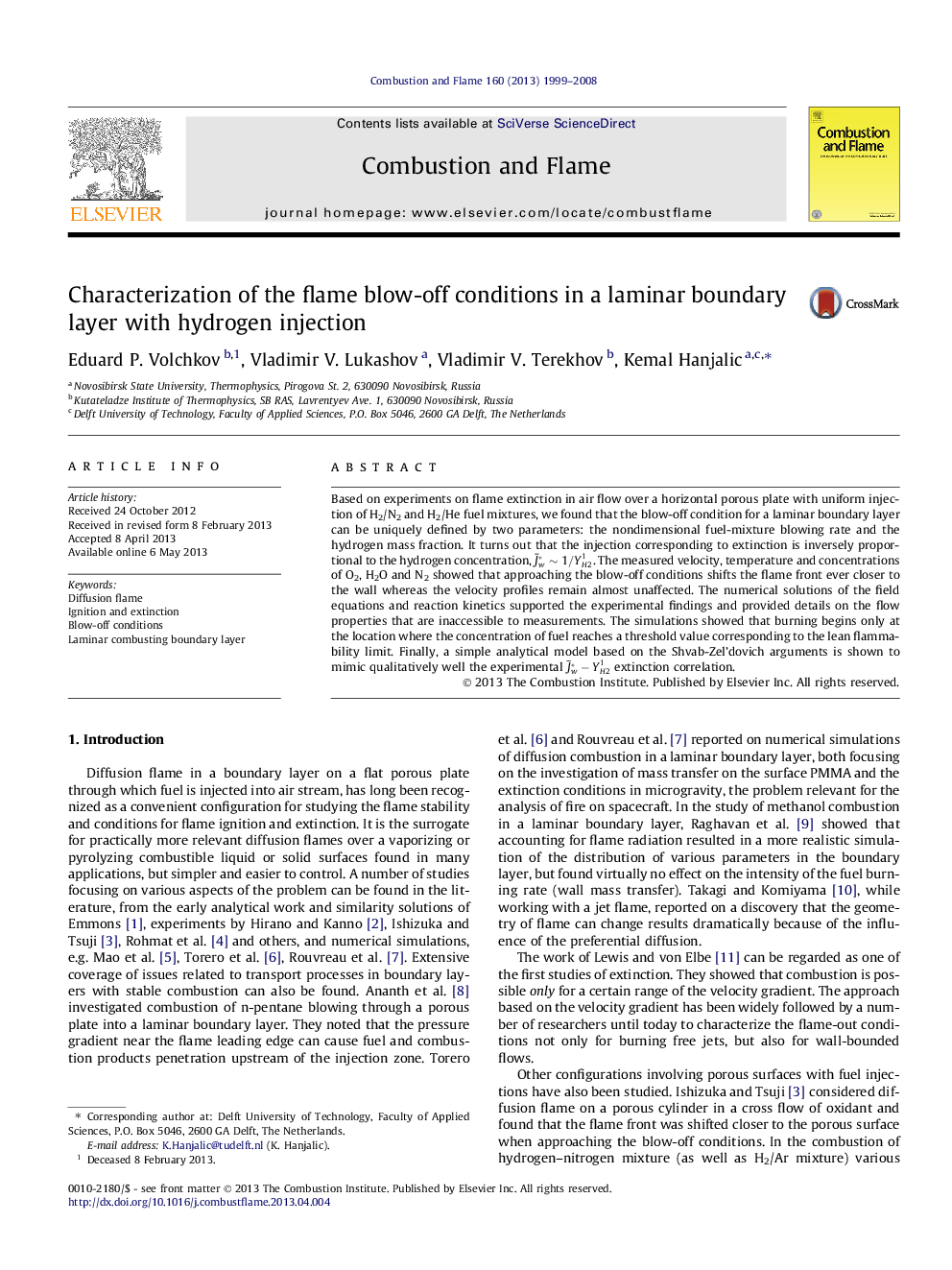| Article ID | Journal | Published Year | Pages | File Type |
|---|---|---|---|---|
| 10264804 | Combustion and Flame | 2008 | 10 Pages |
Abstract
Based on experiments on flame extinction in air flow over a horizontal porous plate with uniform injection of H2/N2 and H2/He fuel mixtures, we found that the blow-off condition for a laminar boundary layer can be uniquely defined by two parameters: the nondimensional fuel-mixture blowing rate and the hydrogen mass fraction. It turns out that the injection corresponding to extinction is inversely proportional to the hydrogen concentration, J¯wââ¼1/YH21. The measured velocity, temperature and concentrations of O2, H2O and N2 showed that approaching the blow-off conditions shifts the flame front ever closer to the wall whereas the velocity profiles remain almost unaffected. The numerical solutions of the field equations and reaction kinetics supported the experimental findings and provided details on the flow properties that are inaccessible to measurements. The simulations showed that burning begins only at the location where the concentration of fuel reaches a threshold value corresponding to the lean flammability limit. Finally, a simple analytical model based on the Shvab-Zel'dovich arguments is shown to mimic qualitatively well the experimental J¯wâ-YH21 extinction correlation.
Keywords
Related Topics
Physical Sciences and Engineering
Chemical Engineering
Chemical Engineering (General)
Authors
Eduard P. Volchkov, VladimirV. Lukashov, Vladimir V. Terekhov, Kemal Hanjalic,
